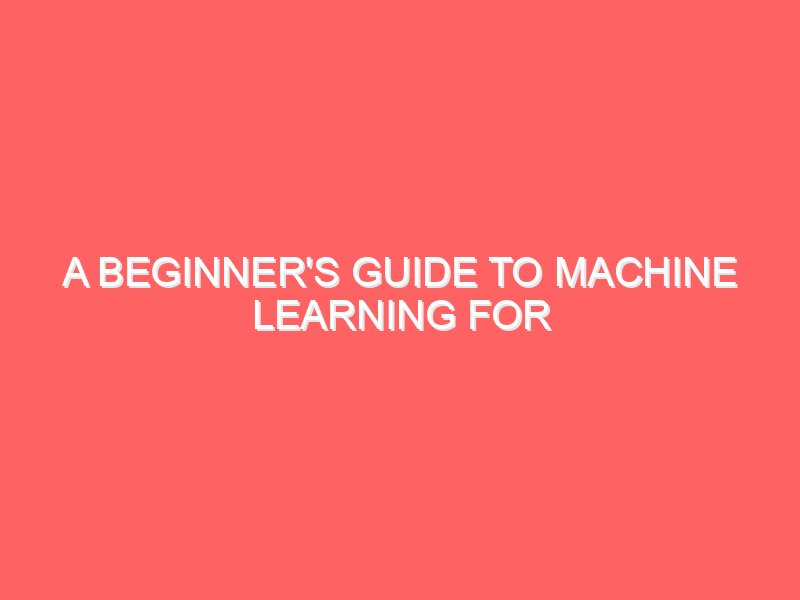Introduction
Welcome to the fascinating world of Machine Learning (ML), a field that is transforming industries and reshaping our everyday lives. If you’re a beginner or a non-tech student, diving into machine learning might seem daunting at first, but fear not! This guide is here to break down complex concepts into simple, relatable language and provide a roadmap for your journey into the realm of ML.
In this guide, we’ll explore what machine learning is, how it works, and why it matters. We’ll walk through real-life examples, offer insights into popular algorithms, and even introduce you to some sample datasets to get your hands dirty. Plus, we’ll show you how Python and Emancipation Edutech can be your trusted allies in learning machine learning, offering free models and resources to kickstart your journey.
Let’s start by unraveling the mystery of machine learning.
What is Machine Learning?
Imagine teaching a computer to learn from experience, just like humans do. That’s the essence of machine learning. It’s a branch of artificial intelligence that empowers computers to learn from data, identify patterns, and make decisions with minimal human intervention.
A Simple Example
Consider a simple task: recognizing handwritten digits. Humans can do this effortlessly, but how do we teach a machine to recognize a ‘2’ from a ‘5’? With machine learning, we can train a computer to do this by showing it thousands of examples of each digit and allowing it to learn from the patterns it observes.
The Core Concept: Learning from Data
At the heart of machine learning is data. Data is like food for machines. It feeds algorithms that process it, learn from it, and improve over time. The more data you have, the better your machine can learn.
Key Components of Machine Learning
Before we dive into the exciting world of algorithms and applications, let’s familiarize ourselves with the key components of machine learning:
- Data: Raw information collected from various sources.
- Features: Specific pieces of information extracted from data.
- Algorithms: Mathematical models that process data and make predictions.
- Training: The process of teaching algorithms to learn from data.
- Model: The final output of the training process, ready to make predictions.
- Evaluation: Measuring the model’s performance and accuracy.
- Deployment: Using the model in real-world applications.
Machine Learning vs. Traditional Programming
Machine learning differs from traditional programming in a fundamental way. In traditional programming, you write explicit instructions for the computer to follow. With machine learning, you provide data and let the computer learn the instructions.
Traditional Programming Example
Let’s say you want to build a spam filter. In traditional programming, you’d write rules to identify spam emails based on keywords like “win” or “free.” However, this approach can be limited and easily bypassed by clever spammers.
Machine Learning Approach
In machine learning, you’d feed the computer thousands of emails labeled as spam or not spam. The machine would analyze patterns and create a model that can identify spam more accurately by understanding the nuances of language.
Why Machine Learning Matters
Machine learning is revolutionizing the way we live and work. It has become an integral part of various industries, offering benefits such as:
- Improved Efficiency: Automating repetitive tasks and optimizing processes.
- Enhanced Decision-Making: Providing insights and predictions for better decisions.
- Personalization: Tailoring products and services to individual preferences.
- Innovation: Driving new technologies and applications across domains.
Real-Life Examples of Machine Learning
To illustrate the impact of machine learning, let’s explore some real-life examples across different industries.
Healthcare: Predicting Disease
In healthcare, machine learning is used to predict diseases and diagnose patients more accurately. By analyzing patient data, ML algorithms can identify patterns that indicate the likelihood of diseases like diabetes or cancer.
Example Dataset
A sample dataset for disease prediction might include features like age, gender, family history, lifestyle habits, and medical records. The machine learning model can learn from this data to predict a patient’s risk of developing a particular disease.
Finance: Fraud Detection
The finance industry relies heavily on machine learning to detect fraudulent transactions. By analyzing transaction data, ML models can identify suspicious activities and alert financial institutions in real-time.
Example Dataset
A fraud detection dataset could include features like transaction amount, location, time, and previous transaction history. The model learns to recognize patterns that indicate fraudulent behavior.
E-commerce: Product Recommendations
E-commerce platforms use machine learning to provide personalized product recommendations. By analyzing user behavior, purchase history, and preferences, ML algorithms can suggest products that a customer is likely to buy.
Example Dataset
A recommendation system dataset might include features like user ID, product ID, purchase history, and browsing behavior. The model learns to recommend products based on similar user profiles.
Transportation: Autonomous Vehicles
Machine learning plays a crucial role in developing autonomous vehicles. These vehicles use ML models to understand their surroundings, make driving decisions, and navigate safely.
Example Dataset
An autonomous vehicle dataset could include features like camera images, radar data, GPS coordinates, and sensor readings. The model learns to interpret the data and make real-time driving decisions.
Getting Started with Machine Learning
Now that we’ve seen the power of machine learning in action, let’s explore how you can get started on your own ML journey.
Step 1: Learn the Basics
Before diving into complex algorithms, it’s essential to grasp the basics of machine learning. Here are some key concepts to explore:
- Supervised Learning: Training a model with labeled data to make predictions.
- Unsupervised Learning: Finding patterns in unlabeled data.
- Reinforcement Learning: Training a model through trial and error to maximize rewards.
Step 2: Choose a Programming Language
Python is the go-to language for machine learning, and for good reason. It’s easy to learn, has a vast library ecosystem, and boasts an active community. Let’s delve deeper into why Python is ideal for ML.
Why Python?
- Simplicity: Python’s straightforward syntax makes it accessible to beginners.
- Rich Libraries: Libraries like NumPy, Pandas, and Scikit-learn simplify data manipulation and analysis.
- Community Support: A large community means abundant resources, tutorials, and support.
- Integration: Python can easily integrate with other languages and technologies.
Step 3: Explore Machine Learning Libraries
Python offers a wide range of libraries to facilitate machine learning tasks. Let’s explore some of the most popular ones:
1. NumPy
NumPy is a fundamental library for numerical computations in Python. It provides support for arrays, matrices, and mathematical functions, making it essential for data manipulation.
2. Pandas
Pandas is a powerful library for data manipulation and analysis. It offers data structures like DataFrames, which are perfect for handling structured data.
3. Scikit-learn
Scikit-learn is a machine learning library that provides a wide range of algorithms for tasks like classification, regression, clustering, and more. It’s user-friendly and well-documented, making it an excellent choice for beginners.
4. TensorFlow
TensorFlow is an open-source deep-learning framework developed by Google. It’s used for building and training neural networks, making it ideal for complex ML tasks.
5. Keras
Keras is a high-level neural networks API that runs on top of TensorFlow. It’s designed to be user-friendly and allows for rapid prototyping of deep learning models.
Step 4: Work with Sample Datasets
To practice machine learning, you’ll need datasets to work with. Here are some popular sources where you can find free datasets for your projects:
1. Kaggle
Kaggle is a platform for data science competitions and collaboration. It offers a vast collection of datasets, ranging from beginner-friendly to advanced levels.
2. UCI Machine Learning Repository
The UCI Machine Learning Repository is a classic resource for machine learning datasets. It hosts a variety of datasets suitable for different ML tasks.
3. Google Dataset Search
Google Dataset Search is a search engine for datasets. It allows you to find datasets from various sources, including academic institutions and government agencies.
Step 5: Practice, Practice, Practice
The best way to learn machine learning is through hands-on practice. Start with simple projects and gradually move on to more complex ones. Here are some project ideas to get you started:
- Predict House Prices: Use historical data to predict future house prices.
- Classify Emails: Build a spam filter to classify emails as spam or not spam.
- Sentiment Analysis: Analyze text data to determine sentiment (positive, negative, or neutral).
- Image Classification: Train a model to recognize objects in images.
How Emancipation Edutech Can Help You Learn Machine Learning
At Emancipation Edutech, we understand that learning machine learning can be challenging, especially for beginners. That’s why we offer a range of resources and support to help you succeed in your ML journey.
Free Machine Learning Models
Emancipation Edutech provides free machine learning models that you can access and experiment with. These models cover a variety of tasks, from simple classification to complex deep learning applications.
Comprehensive Courses
Our comprehensive machine learning courses are designed for beginners and non-tech students. We cover everything from the basics to advanced topics, with hands-on projects and real-world examples.
Experienced Instructors
Our experienced instructors are passionate about teaching and are dedicated to helping you succeed. They provide personalized guidance and support throughout your learning journey.
Community Support
Join our community of tech enthusiasts and learners. Connect with peers, share ideas, and collaborate on projects. Our community is a valuable resource for learning and growing together.
Flexible Learning Options
We offer flexible
learning options to suit your needs. Whether you prefer live classroom sessions or recorded sessions accessible via our Play Store application, we’ve got you covered.
Real-Life Machine Learning Project: Predicting Housing Prices
Let’s dive into a real-life machine learning project: predicting housing prices. This project will give you a taste of the end-to-end machine learning process.
Problem Statement
Given historical data on housing prices, our goal is to build a model that can predict the price of a house based on features like square footage, number of bedrooms, location, and more.
Dataset
We’ll use a sample dataset containing the following features:
- Square Footage: The total area of the house in square feet.
- Number of Bedrooms: The number of bedrooms in the house.
- Location: The geographical location of the house.
- Year Built: The year the house was constructed.
- Price: The price of the house (our target variable).
Data Preprocessing
Before training our model, we’ll preprocess the data to ensure it’s clean and ready for analysis. This involves handling missing values, encoding categorical variables, and scaling numerical features.
Model Selection
For this project, we’ll use a supervised learning algorithm: Linear Regression. Linear regression is a simple yet powerful algorithm that models the relationship between features and the target variable as a linear equation.
Training the Model
We’ll split our dataset into training and testing sets. The training set will be used to train our linear regression model, allowing it to learn the relationship between features and prices.
Evaluating the Model
Once trained, we’ll evaluate the model’s performance on the testing set. We’ll use metrics like Mean Absolute Error (MAE) and R-squared to measure the accuracy of our predictions.
Making Predictions
With a trained and evaluated model, we can now make predictions on new data. By inputting features of a house, our model will predict its price based on learned patterns.
Sample Python Code
Here’s a sample Python code to illustrate the process:
import pandas as pd
from sklearn.model_selection import train_test_split
from sklearn.linear_model import LinearRegression
from sklearn.metrics import mean_absolute_error, r2_score
# Load the dataset
data = pd.read_csv('housing_data.csv')
# Preprocess the data
data = pd.get_dummies(data, columns=['Location'])
X = data.drop('Price', axis=1)
y = data['Price']
# Split the data
X_train, X_test, y_train, y_test = train_test_split(X, y, test_size=0.2, random_state=42)
# Train the model
model = LinearRegression()
model.fit(X_train, y_train)
# Make predictions
y_pred = model.predict(X_test)
# Evaluate the model
mae = mean_absolute_error(y_test, y_pred)
r2 = r2_score(y_test, y_pred)
print(f'Mean Absolute Error: {mae}')
print(f'R-squared: {r2}')This code demonstrates the complete workflow of loading data, preprocessing, training, evaluating, and making predictions with a linear regression model.
Resources for Learning Machine Learning
To deepen your understanding of machine learning, explore these valuable resources:
Books
- “Hands-On Machine Learning with Scikit-Learn, Keras, and TensorFlow” by Aurélien Géron: A practical guide to building ML models.
- “Pattern Recognition and Machine Learning” by Christopher Bishop: An in-depth exploration of machine learning concepts.
- “Deep Learning” by Ian Goodfellow, Yoshua Bengio, and Aaron Courville: A comprehensive guide to deep learning techniques.
Websites and Blogs
- Towards Data Science (Medium): A platform for data science and machine learning articles and tutorials.
- KDnuggets: A leading site for news, opinions, and resources in data science and machine learning.
- Analytics Vidhya: Offers tutorials, articles, and competitions for data science enthusiasts.
YouTube Channels
- StatQuest with Josh Starmer: Simplifies complex machine learning concepts with engaging explanations.
- Sentdex: Offers tutorials on Python programming and machine learning projects.
- Machine Learning Mastery: Provides practical machine learning tutorials and guides.
Conclusion
Congratulations! You’ve taken your first steps into the world of machine learning. From understanding the basics to exploring real-life examples, you’ve gained valuable insights into this transformative field.
Remember, learning machine learning is a journey, and practice is key to mastery. Embrace the challenges, experiment with different projects, and continue to expand your knowledge.
As you embark on your machine learning adventure, remember that Python and Emancipation Edutech are here to support you. With free models, comprehensive courses, and a vibrant community, you’ll have the tools and guidance you need to succeed.
So, what are you waiting for? Dive in, explore, and let the world of machine learning unfold before you. Happy learning!



